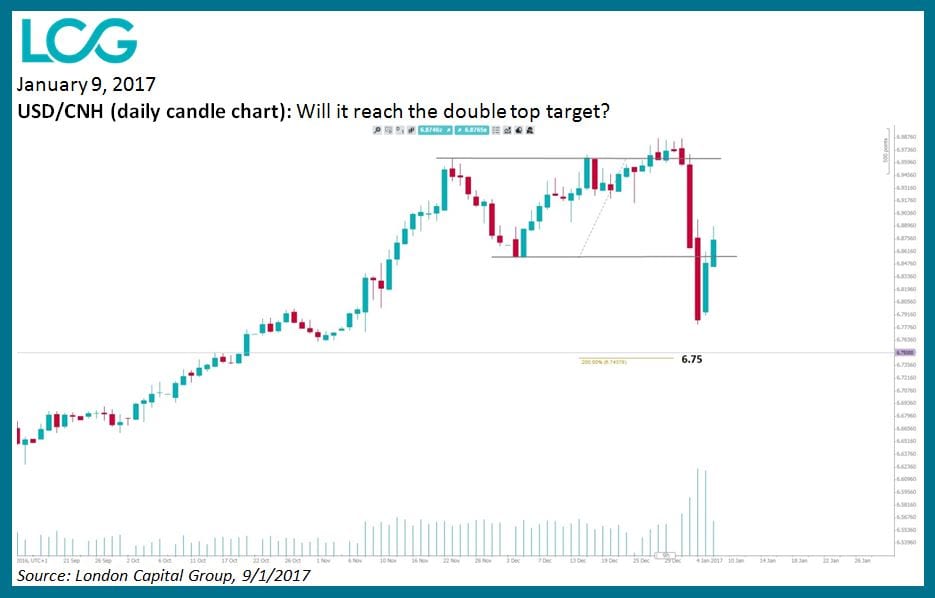This article is written by Jasper Lawler, Senior Market Analyst at FCA regulated broker London Capital Group Holdings plc (LON:LCG).

Jasper Lawler, LCG
It isn’t a coincidence that the US dollar pulled back at the same time the Chinese Renminbi saw its biggest two-day gain on record. Data showed China’s foreign exchange reserves fell for a record sixth month in December, but not by as much as expected. Chinese economic data this week could rekindle problems for the buck.
The dollar-offshore yuan exchange rate (USD/CNH) dropped 2.5% in two days, falling to a near two-month low in the process. Indeed this sudden belt of strength in the Chinese yuan (or Renminbi) is impacting the strength of the dollar.
Last week the US dollar index hit a fresh 14-year high before dropping to its lowest since December 13. At the same time the major currency pairs are showing the beginnings of a reversal. EUR/USD has held 1.04, USD/JPY has put in a short-term top at 118.5 and GBP/USD just about clinging onto 1.21.
The dollar bull market is still intact for now but more short-covering in the Chinese yuan could be its undoing. Dollar selling against the yuan can spill over into other currency pairs. The policy divergence between the Federal Reserve and other central banks is well understood. The dollar may have traveled too far too fast in the expectation that fiscal stimulus from Donald Trump will trigger higher inflation.
Long term devaluation of the yuan seems inevitable but authorities have a lot of room for manoeuvre in the short term. Higher labour costs and slower economic growth is attracting less foreign investment and Chinese companies are investing more abroad. China still runs a large trade surplus but this is also beginning to reverse. This change in the flow of currency is being reflected in the exchange rate. The drop in the value of the yuan then encourages more money to flow out of the country.
The moves in the yuan came as a response to the ongoing Chinese government crackdown on currency outflows via direct intervention in the FX market and ‘capital controls’. A drop in the currency is generally desirable for exports – but if it drops too fast it can be destabilising to trade and investment. China can either prop up its currency by using its foreign currency reserves to buy yuan or it can introduce restrictions on investors and Chinese companies sending money overseas. In December, monetary authorities in China introduced new capital controls to limit the drawdown of its currency reserves.
New Chinese capital controls are unlikely to stop the devaluation of the currency over time but will cause occasional huge swings the other way. The slower drawdown of foreign currency reserves in December shows the Chinese government is having some success with its capital controls, but that is must do more. We believe China will have to introduce further capital controls this year which slow currency outflows and will temporally dissuade speculation against the yuan. Ultimately though, he PBOC cannot fight market forces.
This week economic data from China could be a catalyst for further moves in the yuan. On Tuesday China reports inflation data then rounds off the week on Friday with an update on its trade balance.
The following chart shows the break of the neckline of a ‘Double Top’ pattern at 6.85. If the pattern’s objective were to be hit, USD/CNH could reach 6.75.

